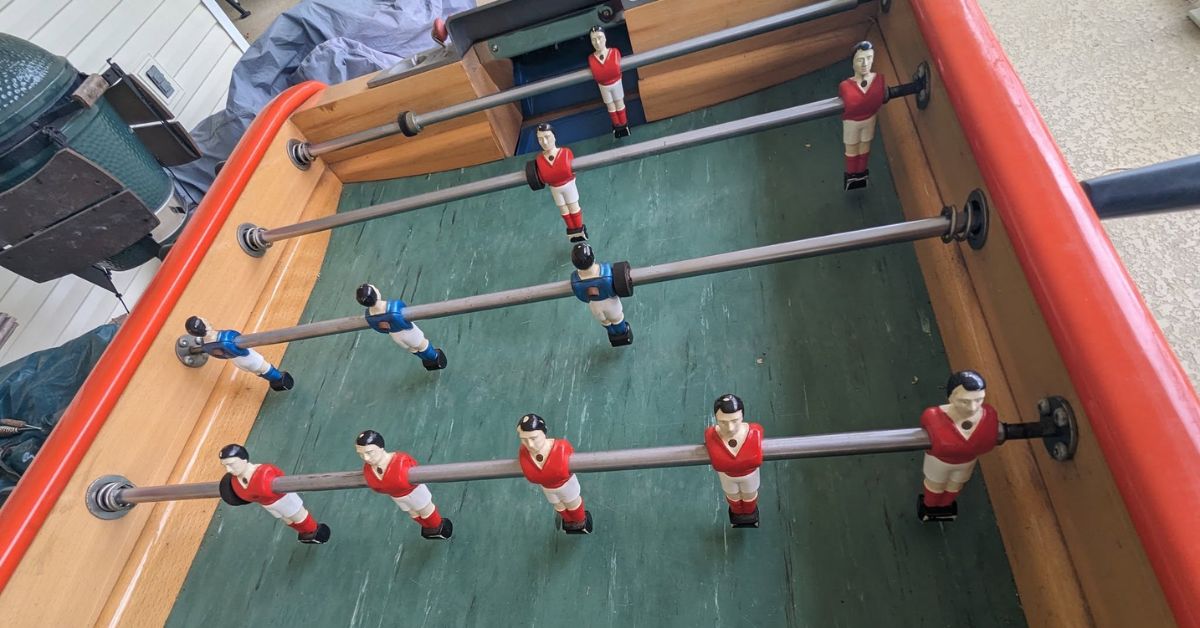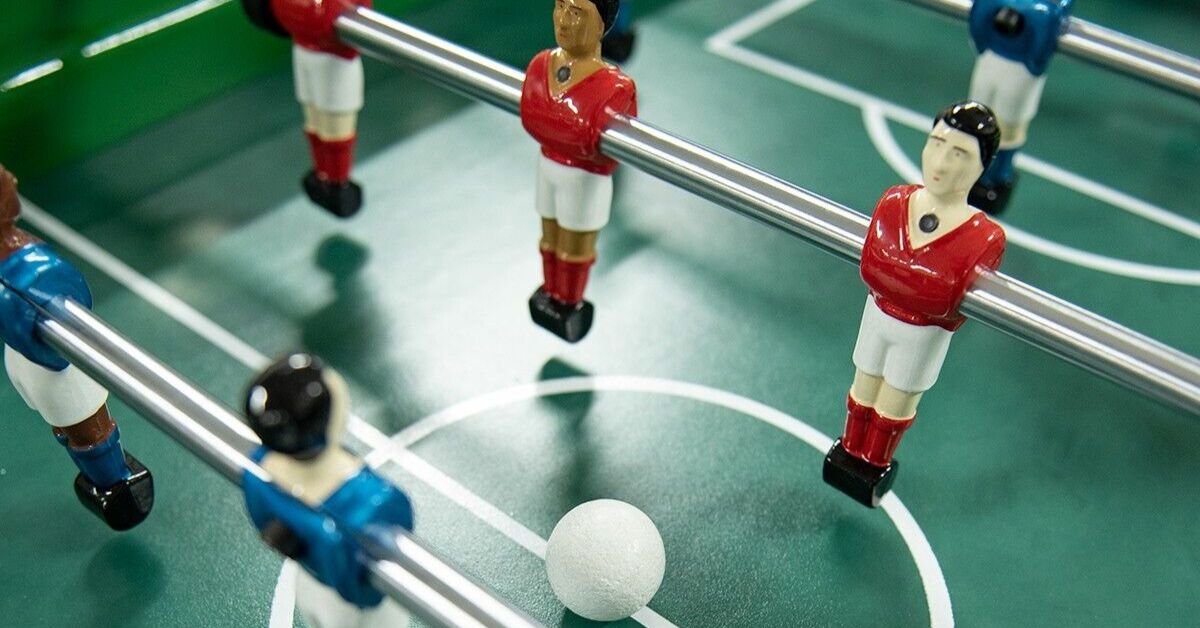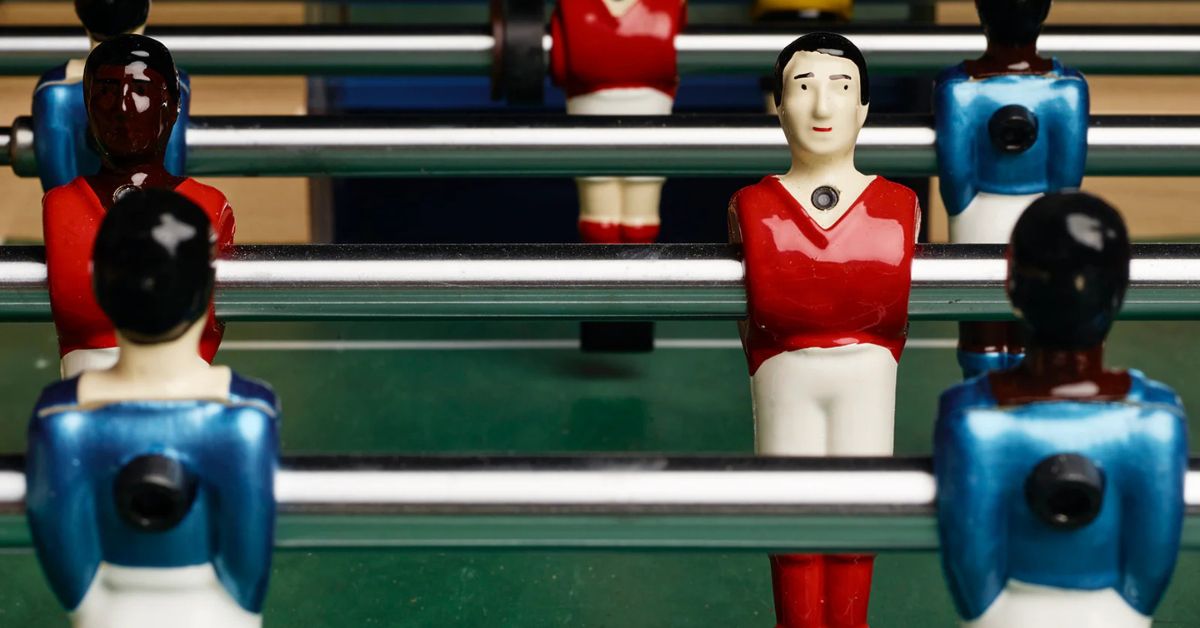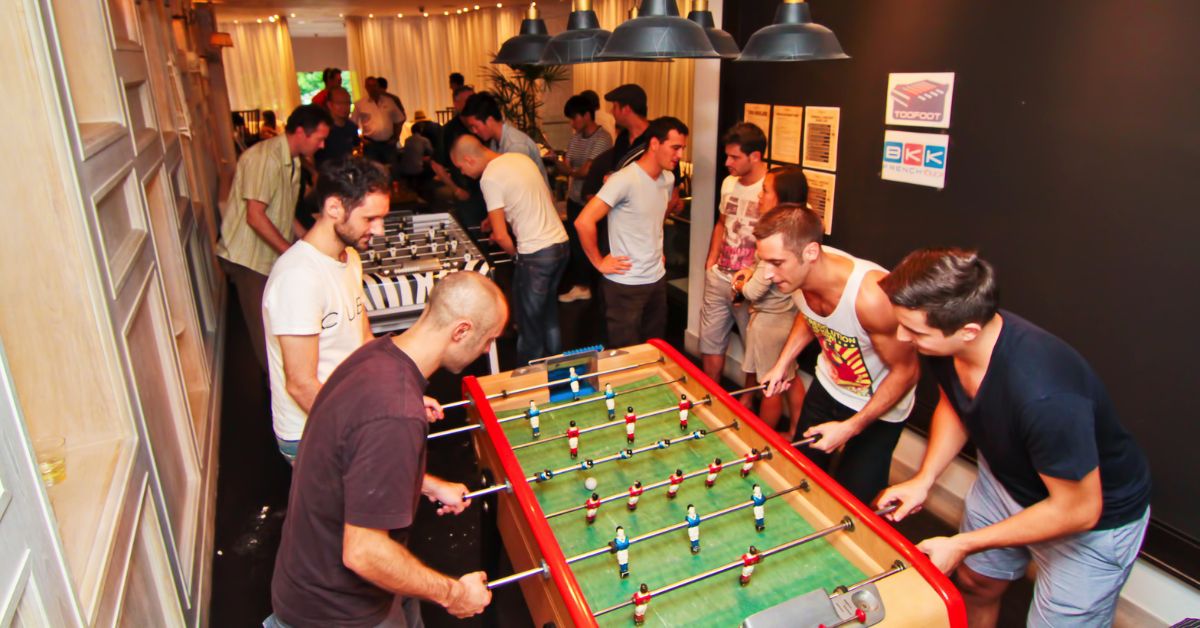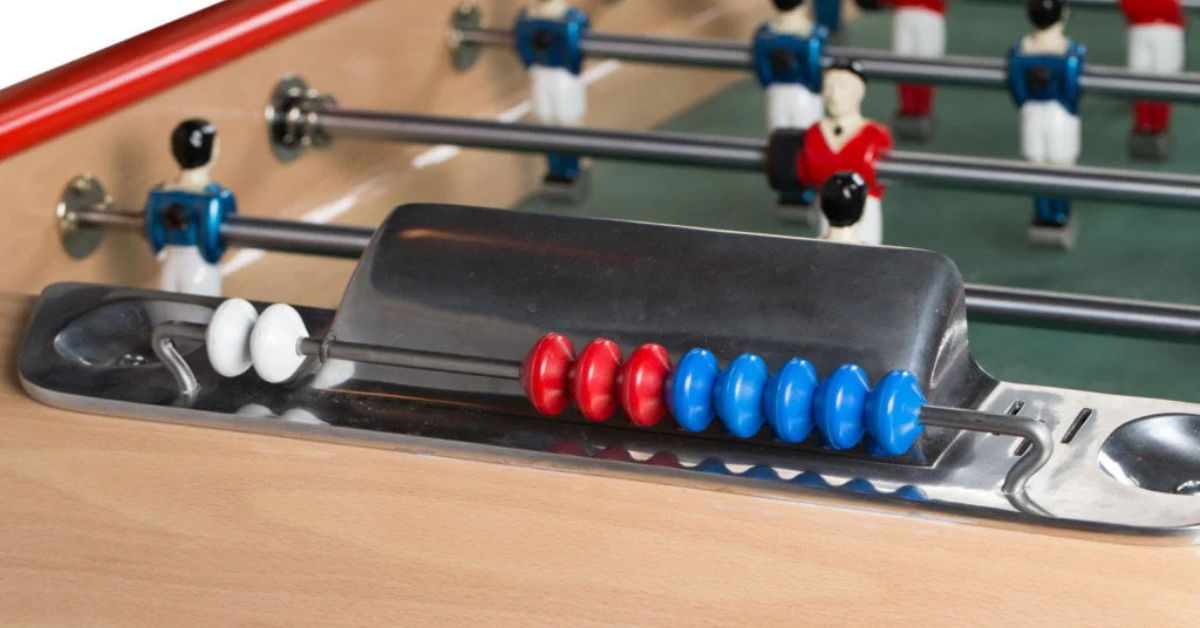Foosball—also known as table soccer—has captivated generations around the world. This fast-paced game has become a staple of fun and friendly competition, whether in game rooms, bars, or basements. But have you ever wondered where it all began? In this article, we take a deeper look at the history of foosball tables, unraveling the story behind this beloved pastime and exploring the milestones that shaped its journey to the top.
The Birth of Tabletop Soccer
We can trace the origins of foosball to 20th-century Europe, where inventors sought to replicate the excitement of soccer on a tabletop. However, the exact birthplace of the game remains a topic of debate, with multiple inventors laying claim to its creation. Patent filings from the 1920s reveal attempts to formalize the game’s design, including attaching the players to rotating metal rods. Many credit Harold Searles Thornton from the United Kingdom as the key figure in foosball’s early development, as he patented his “soccer on a table” concept in 1923.
After foosball’s introduction, the game spread rapidly across Europe, mirroring soccer’s increasing popularity. The transition to a tabletop format provided an exciting yet accessible alternative to traditional soccer, especially in urban areas with limited space. Players could enjoy the thrills of competition without the need for a full soccer field, making foosball an instant hit.
The Evolution of Foosball Tables
Over time, foosball tables evolved, with designers focused on improving gameplay and durability. Craftsmen made early models from wood, with exceptional hand-carved player figures. These tables often reflected the unique styles of the regions that crafted them. For example, French craftsmen designed tables with sleek features that prioritized precision and control.
The mid-20th century marked a significant turning point for foosball as the game expanded beyond Europe to the United States. After World War II, North American soldiers stationed in Europe brought their newfound love for foosball back home, sparking a cultural shift toward home entertainment. US manufacturers began producing their own tables as demand grew, though many considered European imports superior. Among the most revered were the Bonzini foosball tables from France, known for their meticulous craftsmanship and top-tier design.

The Golden Era of Foosball
A fun and interesting fact: the first-ever Foosball World Cup took place in 1958, marking the beginning of international competition. Though, the golden era of foosball didn’t occur until the 1970s. During this period, playing foosball wasn’t just a pastime; it became a full-fledged sport with leagues, standardized tables, and governing bodies.
The Rise of Competitive Foosball
Organizers formed official leagues, established standardized rules, and launched tournaments around the world as foosball gained popularity. What once began as casual entertainment quickly transformed into a competitive sport, solidifying foosball’s reputation as more than just a novelty game. During this era, bars and arcades saw an opportunity and invested in high-quality tables to attract customers, creating passionate local foosball communities. Professional players excelled in these environments, and spectators frequently gathered to watch thrilling tournaments.
The Founding of the International Table Soccer Federation (ITSF)
A game already on the rise saw an even more significant boost with the founding of the International Table Soccer Federation (ITSF) in 2002. This organization has helped implement standardizations to the sport on a global scale, ensuring consistent rules, regulations, and the quality of competition tables. The ITSF’s efforts brought a professional structure to foosball, transforming it into a truly international sport with worldwide tournaments and a dedicated, growing fanbase.
The Standardization of Foosball Tables
The 21st century marked a turning point for the evolution of foosball tables, with several foosball brands emerging as industry leaders. Foosball tables across the globe began to adopt standardized designs with uniform shapes, rods, and surface materials, enhancing the overall gameplay experience. Bonzini and other trusted table brands set the standard for professional-grade play, with official competitions frequently relying on their quality.
Foosball in Popular Culture
Though video games overshadowed some traditional pastimes in the 1980s and 1990s, foosball remained a beloved fixture in game rooms and pop culture. The 1990s sitcom Friends introduced a whole new generation to the game when characters Joey and Chandler bonded over their shared obsession with foosball. These moments reignited interest in the sport, tying it to themes of camaraderie and lighthearted fun.
Meanwhile, serious players continued to cultivate the sport by participating in local leagues and international tournaments. Dedicated enthusiasts worked tirelessly to teach younger generations the game, ensuring that foosball remains accessible to new audiences. Schools, recreational centers, and entertainment facilities have become top spots for the game, helping it stay firmly rooted in the cultural fabric of sports lovers.

Modern Foosball and Its Timeless Appeal
Today, foosball thrives like never before, offering a blend of strategic gameplay and fun social interaction. The game has made its way into corporate breakrooms, college campuses, and even luxury homes now that it is no longer confined to bars or basements. Manufacturers have refined their designs, creating modern tables that cater to professional players and casual fans, while maintaining the charm of traditional models. Bonzini and similar brands continue to produce foosball tables that reflect the game’s cultural heritage while meeting the demands of rigorous play.
More than ever, foosball has become a global activity that appeals to all ages. Whether for lighthearted competition or high-stakes tournaments, the game delivers a thrilling experience that’s challenging and accessible. Its simplicity allows newcomers to pick it up quickly, while strategic depth keeps even the most seasoned players coming back for more.
Why the History of Foosball Matters
A deeper look at the history of foosball tables reveals a game that transcends time and borders. Foosball is more than just a pastime; it has become a global tradition, connecting people across generations and cultures. The journey of foosball showcases innovation and community, from its handcrafted origins to becoming a competitive sport. We hope that understanding its history deepens your appreciation for this enduring game.
Step into foosball’s legacy by investing in a top-tier table. Bonzini USA offers beautifully crafted tables that combine classic designs with professional performance. Explore our collection to elevate your game room and create lasting memories. Don’t wait— bring the excitement of foosball into your home today with a Bonzini foosball table.




